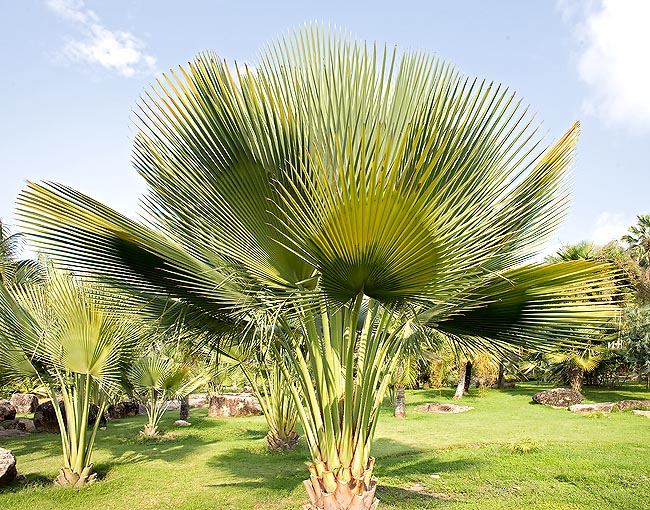Family : Arecaceae

Text © Pietro Puccio

English translation by Mario Beltramini

20 m tall, 50 cm of diametre, and great landscape value for the Tropics © Giuseppe Mazza
The genus is honoured to the astronomer Nicolaus Copernicus (1473-1543) ; the name of the species comes from the Latin “gigas” = giant, with obvious reference to the size of the plant.
It is locally called “barrigon”, “hediondo”, “palmeta”; elsewehere “giant coperni- cia” (English); “géant copernicia” (French); “carnauba-gigante”, “carnauba-de-morcego” (Portuguese).
It shows an imposing, columnar, solitary trunk, tall up to 20 metres with a diameter of 50 cm, covered by the remains of the petioles of the old leaves in the younger part, smooth and of greyish colour in the older one.
The leaves, carried by long petioles with thorny margins, are palmate, of green colour on the upper side, covered by a waxy grey patina on the inferior one, and divided in several rigid segments. The inflorescences which come out between the leaves, arched and ramified, stretch out beyond the crown and carry whitish bisexual flowers. The fruits are globose, 2 cm of diameter, of black colour when ripe. It reproduces by seed which germinates in about 2 months.
Palms of enormous landscape value, for form, size and colour of trunk and crown, cultivable in wide spaces in area with tropical and subtropical climate and in full sun. The cultivation in warm temperate climates can be tried, in particularly sheltered position, as it does not stand, if not for a very short period, temperatures around the 0 °C.
Synonym : Copernicia excelsa León (1931).
→ For general notions about ARECACEAE please click here.
